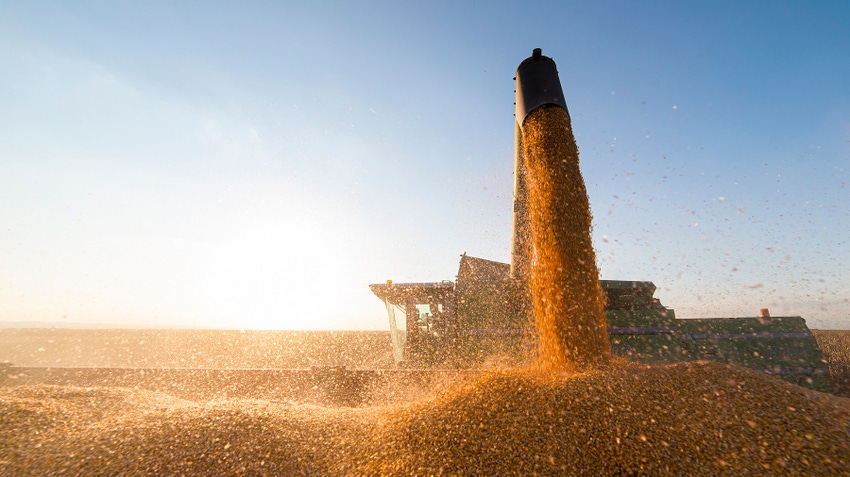
Harvest is in full swing for most of the Midwest. Conversations with clients have centered on variable yield results, potential price scenarios for corn and soybean futures this fall and winter, and questions regarding selling or storing newly harvested grain.
What’s happened
With prices likely near a harvest low, farmers are pondering when and how to price their newly harvested grain. Conversations hinge around selling off the combine, using on-farm storage, weighing commercial storage costs, and the implications of much higher interest rate costs.
These are all talking points with clients as they weigh the pros and cons of pricing now versus storing the crop. Adding to the conversation, is the reality that some producers likely need to generate cash flow and pay bills, making selling sooner than later a reality.
From marketing perspective
If you are looking to sell grain off the combine at harvest but you’re concerned you might miss out on a potential price rally down the road (what if Brazil has a drought during their growing season?), then consider a re-ownership position with various paper tools. We will look at three basic re-ownership strategies and explore the risks associated with each.
Buying futures
This strategy provides re-ownership on paper yet has the potential for margin calls should futures prices fall lower. One futures contract of corn or soybeans represents 5,000 bushels of grain.
When you enter into a futures contract, you need to send in the initial margin requirement (set by the exchange) to your hedging account (with a brokerage firm) for the contract. If you expect the market to go higher, buying futures allows you to receive a penny for penny rate of return. However, that also means potential penny for penny loss, in case prices fall lower, and work against your position. This is when you get a margin call.
An exit strategy must be discussed (for potential profit or loss) with your advisor if incorporating this strategy. If the sound of this makes you queasy then consider a fixed risk re-ownership position instead.
Buying a call option
If you make that cash sale, but then fear missing out on potential higher prices, then consider buying a call option. Buying a call (no margin calls) allows you on paper to be able to participate in any further upward price action, even though the grain has left your farm. One call covers 5,000 bushels, and the cost varies approximately between 10 to 30 cents per bushel (plus commission and fees) for corn, and 20 to 50 cents for soybeans (plus commission and fees), depending on the strike price and month incorporated.
The owner of a call option has the right (not obligation) to own futures. Risk is fixed to the cost of the option (called premium), commission and fees. You will have to determine what call (month) to buy and how much you are willing to pay.
In addition, you will need to decide if you want to buy a call with a low strike price (near the futures price) or spend less option premium on a higher out of the money strike price call.
Bull-call spread
This is where you buy a call option with a strike price near the futures and, in the same contract month, sell a higher strike price call. Your net cost and risk are the difference between what you pay and collect, less commission and fees. This strategy saves on costs out of pocket. Your risk is fixed, and so is your potential gain. The maximum the spread can make is the difference between strike prices, less costs. There is no margin call with this strategy, however, if the market does not rally, you would likely lose the money paid to enter the position.
Prepare yourself
These three strategies have their own merits and risks. Be sure before entering any strategy that you have a full understanding of the risk that may be incurred. If used in conjunction with cash sales, you accomplish the task of selling (shifting risk) and retaining the ownership for more potential upside price opportunity.
Knowing how and when to use the right tool for your risk tolerance and situation is an important component of any marketing plan. Make sure you talk with your advisor, ask questions, understand the potential risks and potential returns on any strategy.
Reach Naomi Blohm at 800-334-9779, on X (previously Twitter): @naomiblohm, and at [email protected].
Disclaimer: The data contained herein is believed to be drawn from reliable sources but cannot be guaranteed. Individuals acting on this information are responsible for their own actions. Commodity trading may not be suitable for all recipients of this report. Futures and options trading involve significant risk of loss and may not be suitable for everyone. Therefore, carefully consider whether such trading is suitable for you in light of your financial condition. Examples of seasonal price moves or extreme market conditions are not meant to imply that such moves or conditions are common occurrences or likely to occur. Futures prices have already factored in the seasonal aspects of supply and demand. No representation is being made that scenario planning, strategy or discipline will guarantee success or profits. Any decisions you may make to buy, sell or hold a futures or options position on such research are entirely your own and not in any way deemed to be endorsed by or attributed to Total Farm Marketing. Total Farm Marketing and TFM refer to Stewart-Peterson Group Inc., Stewart-Peterson Inc., and SP Risk Services LLC. Stewart-Peterson Group Inc. is registered with the Commodity Futures Trading Commission (CFTC) as an introducing broker and is a member of National Futures Association. SP Risk Services, LLC is an insurance agency and an equal opportunity provider. Stewart-Peterson Inc. is a publishing company. A customer may have relationships with all three companies. SP Risk Services LLC and Stewart-Peterson Inc. are wholly owned by Stewart-Peterson Group Inc. unless otherwise noted, services referenced are services of Stewart-Peterson Group Inc. Presented for solicitation.
About the Author(s)
You May Also Like






